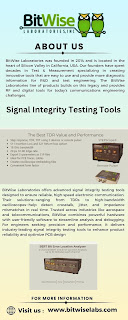How to De-Embed Cables: A Practical Guide by BitWise Laboratories
The first step in learning how to de-embed cables is understanding that what you’re really doing is separating the true performance of your device or network from the distortions introduced by the cables themselves. At BitWise Laboratories, we specialize in accurate cable de-embedding techniques that help engineers and researchers reveal the genuine behavior of high-frequency systems.
De-embedding removes unwanted effects such as loss, delay, and reflections caused by test cables, connectors, and fixtures. These distortions can hide the actual response of your device under test (DUT), making precise measurements impossible. The process involves measuring the cable network separately, then mathematically removing its contribution from the overall measurement using vector network analyzers (VNAs) and S-parameter data.
We approach cable de-embedding with precision and repeatability in mind. Our engineers use calibration standards, fixture characterization, and advanced modeling software to isolate each variable. Whether you’re analyzing RF circuits, PCBs, or high-speed digital lines, de-embedding ensures that what you see in your data is a reflection of the DUT—not the cabling setup.
To perform de-embedding effectively, always start by characterizing your cables over the same frequency range as your DUT. Use high-quality calibration kits, maintain stable connections, and verify your S-parameters for consistency. Then apply the de-embedding model using your preferred VNA software or BitWise’s proprietary calibration tools for unmatched accuracy.




Comments
Post a Comment